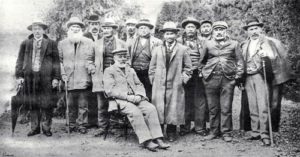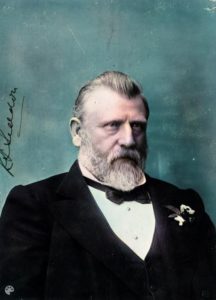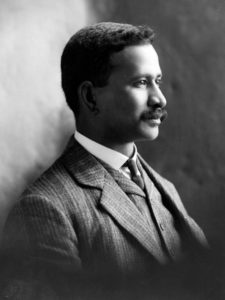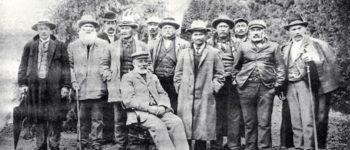1900: Maori Councils
December 27, 2020
By AHNZ
 Richard Seddon’s Liberal Government, in 1900, had a Maori problem on several fronts. Each of these was neatly solved in Machiavellian fashion by the passing of the Maori Councils Act (1900.)¹
Richard Seddon’s Liberal Government, in 1900, had a Maori problem on several fronts. Each of these was neatly solved in Machiavellian fashion by the passing of the Maori Councils Act (1900.)¹
Problem: Annoying Maoris who wanted political power in their own lives. Self-autonomy!
Problem: A Maori King Movement, the Kingitanga, seeking political power
Problem: The growing influence of Maori protectors who wanted to make a difference to the plight of the natives. This included a new wave of young leaders as well as old. Eg. Maui Pomare, Peter Buck, Apirana Ngata, Elsdon Best, Gilbert Mair,..
Problem: Health reform. Bringing Stone Age and and post-Musket War culture into “the age of electricity and radium,” as Peter Buck would put it.²
Problem: Seddon’s administration’s unwanted responsibility for ushering their Maori citizens’ progress into the modern world while retaining the fame and power for being in charge of same.
Problem: The great difficulty and cost of extracting tax revenue and enforcing by-laws on a de-centralised and disparate rural village population
“AN ACT to confer a Limited Measure of Local Self-government upon Her Majesty’s Subjects of the Maori Race in the Colony.”- Title, Maori Councils Act (1900)³
Sounds like a lot of big problems to solve in one stroke doesn’t it? Don’t worry, Richard Seddon knows how to politics.
One Ring To Bring Them All, And In The Darkness Bind Them
Only two years before, in 1898, Seddon’s administration had been put to great trouble in the Far North trying to enforce a simple tax on dogs. This blew out to the Dog Tax War which involved 120 armed men and a warship to solve the enforcement problem by force. If only Central Government could fool Maoris into performing the dirty work of making and enforcing their own dog registration laws!
By creating Maori Councils responsible with big responsibilities (eg progress, health) and little revenue but for middling things like dog registration tax it would solve so many problems in a stroke! And, if progress and health did not eventuate in the new century, why, Seddon’s Liberals could blame it all on native incompetence couldn’t they? Guess they’re not ready for democracy…not our fault…we gave them a chance…so sad! That’s 4 out of 6 of the above problems taken care of right there.
“In 1902 Mair received the significant honour of being appointed the first Superintendent of the new Maori Councils…titular head of all the Maori Councils, and in a sense at the apex of this new government initiative for Maori, the government refused even to provide him with an office, other than a temporary room at Parliament for the first few months…let alone secretarial and accounting support….completely undermined…He was to have just one formal report published..”- p285 Crosby
Seddon and his Native Minister, James Carroll, handed out power in the manner of the Lord of the Rings, Sauron, retaining for themselves a master over-ride power. The elected Maori Councillors had just enough power to be important and take the fall for failing in the dirty work of governing but were still bound to Real Power in the form of that retained by Central Government. ‘King’ Richard had The One Ring To Bring Them All, And In The Darkness Bind Them.
In 1902, Seddon intimated that Maori Councils were impressing him and could have a little bit more power quite soon. In the same year, his Ringwraiths (henchmen, perhaps unwitting) Caroll, Ngata, and Wi Pere were able to have the Kotahitanga movement voluntarily dissolve itself! The plan was working. The MCA was a political pressure valve for Maoris who wanted more autonomy and wouldn’t notice they were not getting it. That was 5 out of 6 problems down.
The Final Problem
The Maori Councils were set up to fail, as the treatment of Superintendent Gilbert Mair showed in the passage above. Or, if they did any good, that was by the by. The State exploits the virtue of well-meaning people this way time and again and will continue to do so until our people learn Anarchic scepticism.
Yet, this statecraft of pretending to be the benefactor of the Maori Race had an audience of motivated and competent actors. How could the Liberals dupe energetic reformers like Buck, Best, Ngata, Pomare, and Mair into the act? The solution to this final problem, getting away with it under scrutiny, was solved easily enough. You bring them in on it.
Buck was made a Native Health Officer for a wide territory. Best was made a Sanitary Inspector. Pomare made Health Officer to the Maoris. Mair, Superintendent of Maori Councils with a hint of administrative support that never became more than a temporary faint and empty title. Ngata was sent on rounds to every Council teaching them Robert’s Rules of Order, how to do accounting, etc and passing on all his Canterbury College learning the way he had always thought he wanted to.
“The councils were expected to supervise sanitation and suppress customs which European health authorities regarded as dangerous…provide accurate information on Maori births, deaths and marriages and population movements. The proclamation of this system did diffuse support for Kotahitanga, but in the long run the experiment was not a success. Councils were embraced with temporary enthusiasm in some districts and ignored in others…eventually lapsed through a combination of lack of enduring enthusiasm, unfamiliarity and impatience with Pakeha committe procedure, and lack of commitment to the inter-tribal co-operation that the system tried to promote. By 1910 most councils had ceased to function.”- p328, King (2003)
 After 10 years of pushing paepae up maunga the Councils had served their political purpose. The Maoris had been teased, exploited, and exhausted, as they had been before and would be again (eg. The Maori War Effort Organisation.) Some of the greatest champions of the Maori Race had been disenchanted, squandered, and exhausted.
After 10 years of pushing paepae up maunga the Councils had served their political purpose. The Maoris had been teased, exploited, and exhausted, as they had been before and would be again (eg. The Maori War Effort Organisation.) Some of the greatest champions of the Maori Race had been disenchanted, squandered, and exhausted.
Ngata, for one, gave up on acting locally and decided instead that only by joining Central Government could he bring change. Peter Buck followed suit. Their success? That’s another story.
“Intelligent legislation taking the place of nature can now bring the Maori rapidly through his three thousand years of arrears in time into the full blaze of the twentieth century, and enable him to take his stand on terms of equality with the white man as fellow-citizen in what the late Mr. Seddon termed God’s own country.””- Buck (1907), Ref. The Maori Communistic System; AHNZ
No Government, central or local, no ‘intelligent legislation’ ever reformed or rapidly transited the Maori through 3000 years arrears. The very idea was Edwardian vanity exploited by Liberal Statism; A social experiment in folly from 1900 to c.1910.
 What actually happened occurred 3 generations later when all of the above actors were in their grave. The Maori died out, functionally extinct, replaced by the part-Maori hybrids of today who had interbreed. These inherited the name Maori (or “Māori”) name although it referred to a new population now who, in the 1960s, exited their old territories and communities. This was The Second Great Migration in which the new Maoris migrated to a country they had not lived in before: New Zealand. The immigrants joined the cities Western New Zealanders had built. Many carried on to Australia too, especially the Gold Coast. For the most part the Māori is under the impression that he is not a product of the West and is owed compensations for Westerners being the migrants into his land, which is completely backwards. For the most part the rest of us let him do that, especially our politicians who continue to exploit the three thousand years of arrears by skimming off the top the endless employment in pretending to be able to fix what isn’t broken.
What actually happened occurred 3 generations later when all of the above actors were in their grave. The Maori died out, functionally extinct, replaced by the part-Maori hybrids of today who had interbreed. These inherited the name Maori (or “Māori”) name although it referred to a new population now who, in the 1960s, exited their old territories and communities. This was The Second Great Migration in which the new Maoris migrated to a country they had not lived in before: New Zealand. The immigrants joined the cities Western New Zealanders had built. Many carried on to Australia too, especially the Gold Coast. For the most part the Māori is under the impression that he is not a product of the West and is owed compensations for Westerners being the migrants into his land, which is completely backwards. For the most part the rest of us let him do that, especially our politicians who continue to exploit the three thousand years of arrears by skimming off the top the endless employment in pretending to be able to fix what isn’t broken.
—
1 Not to be mistaken for the National 2.0 scheme by the same name, est 1962. Or, the Runanga System (scam) of the 1860s
2 Ref. 1906: The Maori Communistic System; AHNZ
Image ref. Apirana Ngata with the new Mahunui Council, est. 1902 at Tuahiwi, North Canterbury. This council’s domain was coast-to-coast, bounded by the Waitaki River in the south and the Clarence River in the north; Christchurch City Libraries
Image ref. Colorised image of Seddon, creator unknown; Reddit
Image ref. Ngata, NZ Law Society
Image ref. Great Conference of Maori Councils of New Zealand, 1904; Ranfurley Family Collection; NZ Tourism Department; National Library
Ref. Gilbert Mair, Te Kooti’s nemesis; Ron Crosby (2004)
Reg. Penguin History of New Zealand, Michael King (2003)
 Like Comment Share
Like Comment Share







